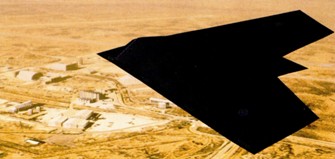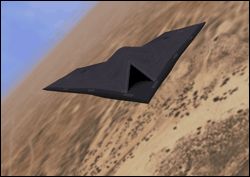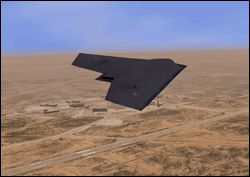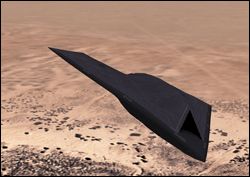JUCAS
The use of UAVs has been one of the great success stories of recent years. However, although UAVs were initially developed for reconnaissance duties, as the vehicles themselves grew larger the obvious next step was to arm them and the Predator has already successfully destroyed a number of targets with Hellfire missiles.
The development of a stealthy Uninhabited Combat Air Vehicle (UCAV), large enough to carry about two tons of ordnance - the same as a front-line fighter aircraft, is the next goal. Such a UCAV would then be capable of conducting high-risk missions, such as Suppression of Enemy Air Defences (SEAD), without risking the life of a pilot. A UCAV would also be one of the first systems to benefit from the development of the Small Diameter Bomb (SDB) which will have the explosive effect of a 2,000lb bomb and yet weigh only about 250lb. As the concept for a UCAV was developed another part of it called for the vehicles to be capable of being stored, minus their wings, in a purpose-built climate-controlled container which would be wired into the vehicle and monitor the various systems to ensure they remained healthy. The containers would then be stored in a hanger and then used as necessary – six such containers would be carried to a forward airfield in a C-17 or twelve in a C-5.
Two UCAVs are currently under development in demonstration programmes. In 1999 Boeing were awarded a contract to build two small development UCAVs named the X-45A which first flew in May 2002. The X-45A has one working weapons bay, with the other bay filled with avionics. Instead of a traditional hydraulic system, with the exception of the nose wheel steering and hiking system, the X-45A was all electric. The single Honeywell F124-GA-100 eingine was fed through an unusual serpentine inlet and used a yaw thrust vectoring system. The X-45A could carry a payload of 1,500lbs, operate at 35,000ft and cruise at Mach 0.75.
Meanwhile Northrop Grumman was also building a small development UCAV for the US Navy – the X-47A. Although a similar size to the X-45A, the X-47A was a completely different shape, but had similar performance. The X-47A was designed from the outset to investigate whether UCAV's were suitable for carrier operations and simulated typical carrier operations by landing near a predesignated touchdown point and utilized the Shipboard-Relative Global Positioning Satellite (SRGPS) system, the same as fitted to a F/A-18 Hornet, as its guidance system for a precision landing. The X-47A was powered by a single Pratt & Whitney JT15D-5C engine.
To avoid duplication of effort the two programmes were combined as the Joint Unmanned Combat Air System (J-UCAS) managed by DARPA. The J-UCAS programme is a joint DARPA/Air Force/Navy effort to demonstrate the technical feasibility, military utility and operational value for a networked system of high performance, weaponized unmanned air vehicles to effectively and affordably prosecute 21st century combat missions, including SEAD, surveillance and precision strike within the emerging global command and control architecture. On 12 Oct 04 Boeing was awarded a $767 million to build three X-45Cs UCAV for the USAF, together with two ground based mission control stations. The X-45C will be 39ft long, have a 49ft wingspan, be powered by a single General Electric F404-GE-102D engine, cruise at Mach 0.80 at 40, 000ft, carry a 4,500lb weapon load in two internal weapons bays and have a combat radius of 12,000nm.
In Aug 04 Northrop won a five year $1.04 billion contract to build three X-47Bs and three mission control stations for the US Navy. The X-47B will be just over 38ft long, have a 62ft wingspan, weight 41,997lbs, be powered by a single Pratt & Whitney F100 engine, be capable of wing folding, carrier launch, recovery and in flight refuelling - the aim is for the X-47B to be one-third the purchase cost and one-half the operating cost of an F/A-18C. Both the X-45C and X-47B taxi, take-off, conduct their missions and land fully autonomously, or can be controlled by a pilot operator – the UCAVs are both scheduled to fly in 2007. Operational assessment is scheduled for 2008-9, to test the flying qualities of the UCAVs, as well as complete weapon and system integration. Current UCAV development is focused on their role as interdictors, but in time UCAVs will also be equipped with self-defence systems and with their ability to pull 20G, considerably more ‘G’ than a manned aircraft can sustain, a stealthy UCAV armed with advanced air-to-air missiles would make a formidable opponent.
Although initially conceived as a stealthy means of delivering ordnance onto a target, the excellent reconnaissance capabilities of the UCAVs will also be put to good use, indeed now reconnaissance over heavily defended areas is the primary mission of the US Navy's UCAV. It is planned that UCAVs will be equipped with advanced Electronic Support Measures (ESM) suite, Electro-Optical (EO) and Infra-Red (IR) sensors. Also in development is an advanced X-Band Thin Radar Aperture (XTRA) array which could provide both a Synthetic Aperture Radar (SAR) and Ground Moving Target Indicator (GMTI) capability – these sensors combined would enable a UCAV to locate, identify, track and target enemy static or mobile facilities. Also under development are foliage penetrating radar and sub-surface sensors. The data collected by the UCAV will be transmitted via data-link or SATCOM giving the vehicle a near real-time reconnaissance role. Most commentators now recognise that, with many of today’s front line fighter aircraft scheduled for retirement in massive numbers beginning in 2015, their replacements will be a mix of manned and unmanned systems and as time goes on the proportion of unmanned systems is likely to increase, rather than decrease.
However, as the J-UCAS programme progressed significant differences between the USAF and USN requirements could not be settled and in 2005 it was cancelled. In particular, the USAF decided that their requirement for a long-rane bomber to enter service around 2018 could not be met by the J-UCAS, the vehicle was simply too small to achieve their target of a 4,500kg (10,00lb) payload delivered over a 3,700km (2,000nm) radius and they are now developing a Long Range Strike (LRS) programme to meet this goal. The USN requirement was always for a much smaller UCAV, dictated by their requirement to operate from an aircraft carrier. The USN are still looking to acquire a UCAV, under a programme re-named the Naval Unmanned Combat Air Strike (N-UCAS), with the focus shifted from persistent intelligence, reconnaissance and surveillance to strike. Both the Northrop X-47B and the Boeing X-45C are being reconfigured to try and meet the N-UCAS requirement for a 1,800kg payload delivered over a 2,000 to 3,000kn radius. Despite the USAF public position, the US Navy Fiscal Year 2007 budget document has disclosed that the old J-UCAS programme was actually split into two new strands: the new N-UCAS programme and a classified USAF programme, primarily for intelligence, surviellance and reconnaissance, but exactly what vehicle results from this programme remains to be seen.
But that is not quite the end of the story, because in 1998 a NASA paper reported that twenty four General Electric J97-GE-100 turbojet engines, built orginally to allow the top secret AQM-91A Compass Arrow UAV to cruise at 80,000ft over communist China, were not scrapped as originally thought when this programme was cancelled. In fact these engines were actually placed in storage at their AMES research centre. It then appears that two of these General Electric J97-GE-3-100 engines may well be used to power a classified USAF UAV programme, funded with money taken from the terminated J-UCAS programme and known as the Penetrating High Altitude Endurance (PHAE). The PHAE is believed to be a stealthy, twin-engined, UAV capable of cruising between 70,000 to 80,000ft and capable of carrying various weapons enabling it to conduct SEAD, as well as traditional ISR missions as necessary – so hopefully the money spent on developing the technology for the Compass Arrow has finally been put to the use that was origionally intended. In a nutshell, the USAF version of the UCAS is still alive, despite the best efforts of the pilot mafia at the top end of the USAF, and is now a 'black programme' called the PHAE.
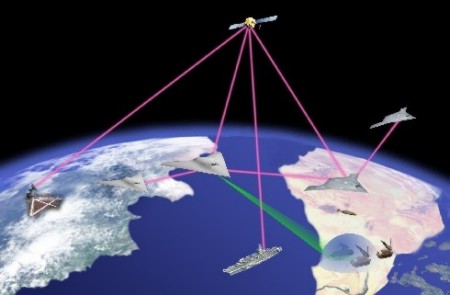
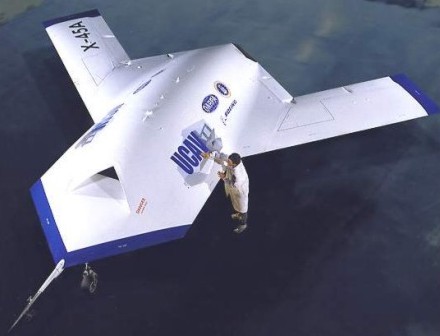
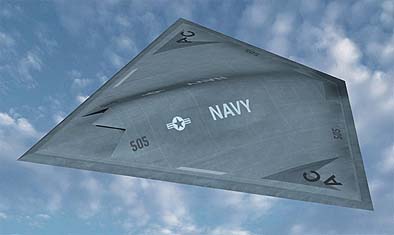
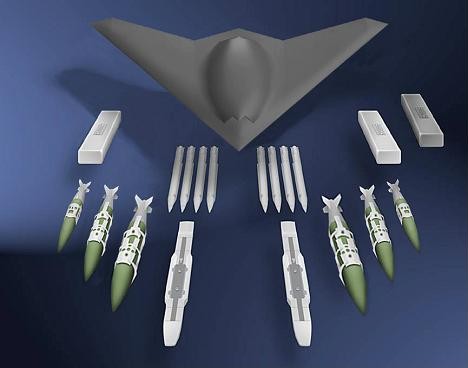
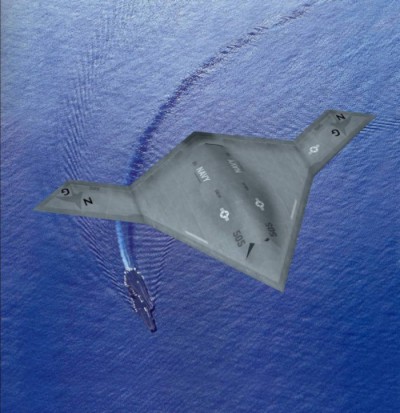
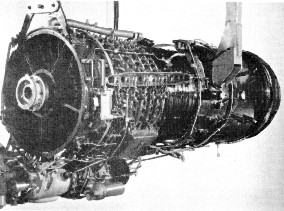
Neuron
Since 1967, when General De Gaulle, a myopic and vain-glorious rabid anti-American, insisted that France withdraw from NATO, the country has always maintained a fairly ambivalent attitude towards the USA. In particular, successive governments have insisted on supporting the French defence industry, regardless of cost or quality, by almost always purchasing French equipment. Air-to-Air Refuelling (AAR) and Airborne Early Warning (AEW) aircraft are the only two areas that the French have been forced to grit their teeth and buy US equipment - 12 C-135F Stratotankers for the French Air Force, four E-3F Sentry’s for the French Air Force and 4 E-2C Hawkeye’s for the French Navy. Although the French armed forces are sometimes fortunate to obtain equipment tailored exactly for their particular needs and however commendable this support for French national industries may be, it comes at a price for the French taxpayer. Often equipment is considerably more expensive than other very similar equipment from other suppliers and because it has been tailored for a specific French requirement, it can sometimes be difficult to sell on to other countries.
Many countries that decide to get involved in collaborative defence projects with the French soon discover a catch - namely that the project will only tend to get past the discussion stage if the other country effectively agrees to give the French the design lead, as well as allow them to tailor the requirement to suit French needs first and the other countries second. When France cannot get their own way, they generally have a hissy fit, withdraw from the project and build what they want in France, regardless of cost. A good example of this is the Eurofighter Typhoon, when the other countries involved refused to let France have their way and build a much lighter aircraft suited for carrier operations, which only the French wanted, they went off in a sulk and built the Rafael at considerable extra cost. However good the Rafael is, it will have stiff competition from the Eurofighter and the Gripen and will struggle to secure export orders.
The French defence industry, led by Dassault, know that the Unmanned Combat Air Vehicle (UCAV) is bound to become one of the decisive weapons of the 21st century and, as a consequence, are determined to develop a French UCAV to compete with the two UCAVs currently under development in the USA. Consequently, Dassault has managed to convince Greece, Italy, Spain, Sweden and Switzerland to join them in a cooperative project to develop the Neuron UCAV. Roughly about the same size as a Mirage 2000, Neuron is a stealthy, all- electric, subsonic, all-composite, flying wing with an internal weapons bay. The weapons bay is designed to accommodate a variety of munitions or reconnaissance sensors in a modular, quick-change package. Two goals of the programme is to make maximum use of COTS avionics and to enable the vehicle to operate in a network-centric environment.
Dassault will be the prime contractor for the programme and France’s DGA will be the project manager. Currently it is planned that half the programme will be sourced outside France, although how long that arrangement will last remains to be seen. Currently Sweden will concentrate on developing the avionics, EADS-CASA (Spain) will develop the composite structure and ground control systems, Hellenic Aerospace Industries (Greece) will aft fuselage and exhaust, Alenia (Italy) will develop the Smart Integrated Weapons Bay (SIWB) using experience gained on their Sky-X demonstrator and RUAG (Switzerland) will develop the weapons interfaces. Neuron is scheduled to make its first flight in 2010, but according to Dassault it is not a production programme, instead the programme is designed to develop and sustain Europe’s ability to design and integrate sophisticated military airframes – absolutely, why would anyone even think that the programme is really all about giving Dassault the ability to rapidly build a production model as and when it suits them.
It’s no surprise that the Neuron looks virtually identical to the Boeing X-45C and will also probably be similar to a number of other UCAVs in the future – as a number of companies have discovered, a tail-less delta-wing design, with the engine intake above fuselage, is probably the optimum design for a stealthy UCAV. However, problems are already beginning to emerge in some of the countries in the Neuron programme. In particular, the minority parties in Sweden’s coalition government have blocked Swedish funding for their 25% participation in the Neuron programme, amounting to some EUR75 million. A study will now be undertaken by the Swedish Defence Materiel Administration (FMV) into Sweden’s involvement in all international co-operative programmes and the needs of Sweden’s aerospace industry over the next 30 years or more. In the meantime SAAB are developing their own demonstrator UCAV named Filur to assess stealth technologies for possible use in the Gripen fighter and possibly also for a purely Sewdish UCAV.
I believe the market for UCAVs will be far smaller than that currently available for fixed wing aircraft and, given Sweden’s traditional neutrality, I don’t really think they would get much return on their considerable investment in the Neuron programme. If the FMV report recommends against Sweden’s involvement in the Neuron, it’ll be interesting to see who will be prepared to pick up their 25% of the bill, of course the French should, but I suspect the French will try and look for another partner. They need not look across the channel at the BAe Systems, as they have already test flown a stealthy fighter-sized UAV of their own called Corax and are unlikely to want to become involved as a junior partner in a French dominated programme. Whether Corax or other BAe Systems UCAVs ever lead to a UK UCAV programme remains to be seen, but in the longer term I suspect the UK will be more interested in some form of close involvement in the US J-UCAS programme, rather than run the risk and expense of funding a small production run of a UK UCAV – but only time will tell.
In early Jan 06 it was announced it was announced that the Swedish government had granted its approval for national participation in the project by SAAB. The Swedish governments delay in granting approval for the participation of SAAB has delayed the project by about six months, however, with flight tests planned for 2010, I think there are many turns still ahead on the rocky road to Neuron's first flight.
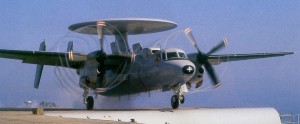
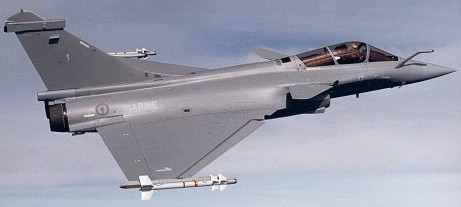
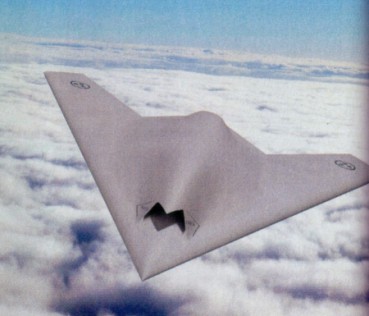
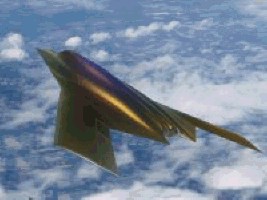

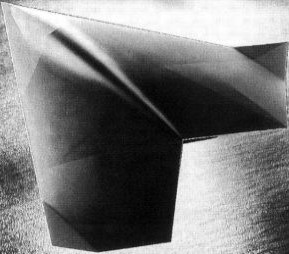
BAe Systems Taranis UCAV
The development of UCAVs is gathering pace with a number of countries busy developing their own systems, such as the USA with the Northrop X-47, Russia with their MiG SKAT and Germany with the Barracuda or becoming involved in a partnership arrangement, such as the Neuron UCAV led by France but with participation from Greece, Italy, Spain, Sweden and Switzerland. Most of the key technologies for UCAVs are readily available in isolation, the challenge is to draw all these elements together into a working UCAV, something that will take both time and considerable financial investment, not least in the complex mission software that is probably the most crucial part of the whole system. Time will tell which of these systems actually enters service.
BAE Systems has quite rightly steered clear of becoming entangled in a collaborative UCAV project with any country and instead decided to build on the work undertaken in their Replica and Nightjar studies. In close collaboration with other UK companies such as QinetiQ, Rolls-Royce and Smiths, they instead have quietly and in some secrecy developed a number of prototype UCAVs to test the basic design and systems involved in a full scale UCAV. In 2003 the first of two demonstrators named Raven first flew at the Woomera test range in central Australia. Built mainly of carbon fibre, the Raven incorporated the main design element that appears on nearly all UCAVs - a flying wing with no vertical or horizontal tail surfaces. On the Raven the Adour engine is buried in the centre of the fuselage with the air intake on top and all control surfaces situated on the wing and aligned with the trailing edge. The Raven was used to develop and test a digital flight control system for the aerodynamically unstable design and was fully autonomous from take-off to landing, but also retained a ground station. BAE Systems then embarked on testing a larger scale version of the Raven named Corax. This design retained the central fuselage, engine and systems of the Raven with a larger 10 metre high aspect wing and was designed from the outset as a long-endurance unmanned reconnaissance air vehicle. Corax first flew in 2004, once again at the Woomera test range and provided BAE Systems with additional feedback on their design and flight control system.
Building on the success of these demonstration programmes, in 2007 BAE Systems were awarded a £124 M contract to develop another UCAV named Taranis, after the Celtic god of thunder. The contract is part of the MOD’s Strategic Unmanned Air Vehicle (Experiment) SUAV(E) programme and aims to explore and demonstrate how emerging technologies and systems can deliver battle-winning capabilities for the UK armed forces. Around the size of the Hawk aircraft, the low-observable 8 ton Taranis will be designed for fully autonomous reconnaissance and attack missions and will probably be powered by a Rolls-Royce Adour engine. The first Technology Demonstration Vehicle (TDV) will not actually drop weapons, but will simulate weapons release as part of flight testing during a typical mission scenario. The Taranis will probably have two internal weapons bays and an optional fit of electro-optical and radar sensors, eventually it could even carry directed energy weapon systems such as a laser or high-powered microwave transmitter. Ground testing of the Taranis is planned to begin in early 2009 at the Woomera test range, with the first flight to follow in 2010.
In developing and successfully flying the experimental Raven and Corax UCAVs, without having to enter into collaborative arrangements with other major aviation companies, BAE Systems has avoided getting bogged down by the usual in-fighting that national collaboration always involves and has also demonstrated that it is as far ahead in this field as any company outside the USA. BAE Systems have now formed a new air sector business centre the Autonomous Systems and Capability (Air) with its own management, research and technology team to exploit the potential business opportunities available in this emerging market.
